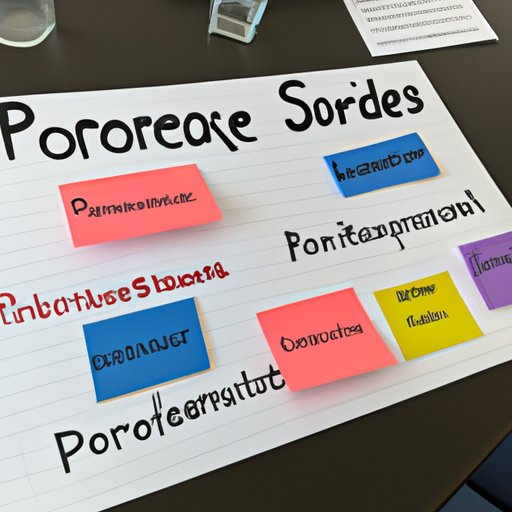Introduction
Property in science can be defined as a characteristic or quality that can be used to describe an object or phenomenon. In other words, it is a feature that distinguishes one object from another. Properties can be physical, chemical, or biological in nature, and they are essential to understanding the behavior of objects and phenomena in the natural world. This article will explore the types of properties in science, how they are related to laws, and how they are used in scientific research.

Exploring the Types of Properties in Science
In science, properties are divided into three main categories: physical, chemical, and biological. These categories are based on the type of information they provide about an object or phenomenon.
Physical Properties
Physical properties are those that describe an object’s physical characteristics. Examples of physical properties include color, shape, size, texture, and density. Physical properties are often measured by instruments such as rulers, scales, thermometers, and calipers.
Chemical Properties
Chemical properties are those that describe an object’s chemical composition and reactivity. Examples of chemical properties include flammability, solubility, acidity, and combustibility. Chemical properties can be determined through observation, experimentation, and analysis.
Biological Properties
Biological properties are those that describe an organism’s structure, function, and behavior. Examples of biological properties include metabolism, growth rate, and reproductive capacity. Biological properties can be studied through observation, experimentation, and analysis.

Investigating the Relationship Between Properties and Laws in Science
Properties are not only used to describe objects and phenomena, but also to derive laws in science. Scientific laws are statements that describe how objects and phenomena behave under certain conditions. They are based on observations and experiments, and are used to make predictions about future events.
Defining Scientific Laws
Scientific laws are derived from observations and experiments, and they are typically expressed as mathematical equations. Examples of scientific laws include Newton’s law of gravitation, the law of conservation of energy, and the law of conservation of mass. The laws of science are universal, meaning they apply to all objects and phenomena in the universe.
How Properties are Used to Derive Laws
Properties are used to derive laws in science because they provide information about an object or phenomenon. For example, Newton’s law of gravitation was derived from observations of the motion of planets and their moons. By studying the properties of these celestial bodies, such as their masses and distances, Newton was able to formulate the law of gravitation.
Analyzing How Properties are Used in Scientific Research
Properties are also used in scientific research. Research is an ongoing process of collecting and analyzing data to answer questions and solve problems. In order to conduct effective research, scientists must first identify the properties of the objects or phenomena they are studying.
Research Design and Data Collection
The first step in the research process is to design a research plan. During this stage, scientists must identify the properties of the objects or phenomena they are studying and determine how to measure them. This involves selecting the appropriate instruments and methods for collecting data. Once the data has been collected, it can be analyzed and interpreted.
Analyzing and Interpreting Data
The next step in the research process is to analyze and interpret the data. During this stage, scientists use the data to draw conclusions and make recommendations. This involves identifying patterns, trends, and correlations between the properties of the objects or phenomena and their behavior.
Drawing Conclusions and Making Recommendations
Once the data has been analyzed and interpreted, scientists can draw conclusions and make recommendations. These conclusions and recommendations are based on the properties of the objects or phenomena being studied and the results of the research. Scientists may also use the data to formulate hypotheses or develop theories.
Conclusion
In conclusion, properties play an important role in science. They are used to describe objects and phenomena, derive laws, and conduct research. By understanding the types of properties, the relationship between properties and laws, and how properties are used in scientific research, scientists can gain a better understanding of the natural world and make meaningful contributions to our knowledge and understanding of it.
Summary of Key Points
This article explored what property is in science, detailing its types, relationship with laws, and how it is used in scientific research. It provided an overview of properties in science and examined how they are used to derive laws and for data collection.
Implications for Further Study
Further research is needed to better understand the relationship between properties and laws in science and how properties can be used in scientific research. Additionally, more research should be done to explore the implications of properties for different fields of study. Finally, research should be conducted to identify new ways of using properties to improve our understanding of the natural world.
(Note: Is this article not meeting your expectations? Do you have knowledge or insights to share? Unlock new opportunities and expand your reach by joining our authors team. Click Registration to join us and share your expertise with our readers.)
